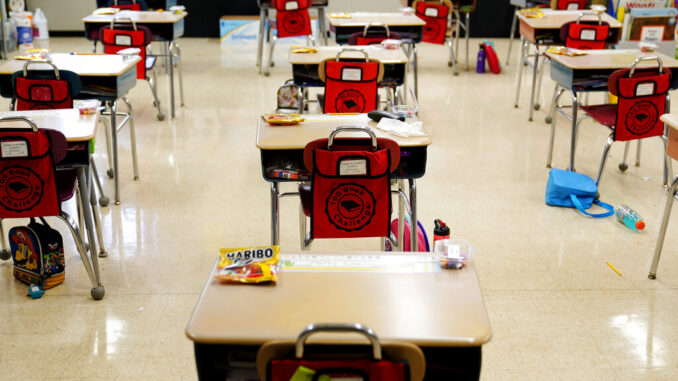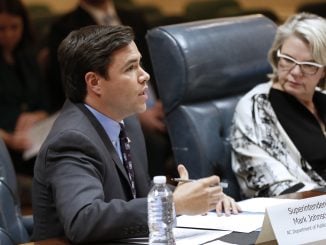
RALEIGH — Student test scores for the 2023-24 school year were presented to the North Carolina State Board of Education last Wednesday. Overall, scores across most subjects continued to see upticks when compared to the last two school years but remain behind pre-pandemic rates.
“We are proud of the steady progress reflected in this year’s state test scores,” State Superintendent of Public Instruction Catherine Truitt said in a statement. “This progress highlights the hard work and incredible dedication of educators and students across the state.
“The data in the accountability report provides us with a clear picture of what’s going well in our schools and what areas need additional support. This year’s data shows us that we’re headed in the right direction in most areas, but that we must remain committed to advocating for additional support for our teachers.”
The results for each grade level and subjects area were presented in percentages for both grade-level proficiency (GLP) and college-and-career readiness (CCR). Test scores can fall into five levels, with five being the highest; GLP spans levels 3-5 and CCR levels 4-5.
For the 2023-24 year, the report found most grades had small to moderate upticks in GLP in reading and math, and not a lot of changes in science.
End of Grade (EOG) reading for grades three, five, six and eight saw small gains, but fourth and seventh grades declined over the previous year. GLP in 2022-23 for the fourth grade went from 55.1% to 52.6% this year, and for the seventh grade, the respective drop was 50.1% to 48.3%.
End-of-grade reading performance by grade (Level 3 and above—GLP Standard)

End-of-grade mathematics performance by grade (Level 3 and above—GLP Standard)

High school English II scores increased to 59.5% from 58.3% in 2022-23.
EOG math scores were a different story, with GLP scores rising over the previous year for third through eighth grades. The only grade that didn’t increase by one to two percentage points was seventh grade, which only ticked up to 50.4% from 50.2%.
NC Math 1 GLP scores were compiled for all students who took the course. Overall, the GLP for all students for Math 1 was 51%, up from 49.3% the previous year. High schoolers taking the course showed a one-point increase over the previous year with 37%. Students in eighth grade had the highest GLP with 89.5%. That score is up over the previous two years — 85.9% in 2021-22.
Fifth grade science GLP for this year came in at 66%, up from 65.1% last year. Eighth grade science remained statistically unchanged from the previous year at 70%. High school biology GLP dropped 53.4% from 54.1%.
While most of the data presented compared the last three school years since the pandemic, the results were also compared to the 2018-19 pre-pandemic year.
Very few subjects have a GLP this year that is close to pre-pandemic levels, and only one subject, Math III, has surpassed its pre-pandemic rate.
Math III GLP increased from 46.8% to 57.6%, a gain of more than 10 points. English II also comes close with 59.5% for 2023-24 versus 59.7% in 2018-19.
The report showed that of the 2,558 schools included in the results, 72.5% of schools either met or exceeded growth in 2023-24. Additionally, the number of schools considered low-performing dropped to 736 from 804 the previous year.
The state’s A-F school performance grades are tied to student achievement (80%) and growth (20%) and this year, there were more A, B, and C schools compared to last year.
The number of “A” schools increased by 14, going from 180 in 2023 to 194 this year, while “B” schools rose from 515 to 526, and “C” from 983 to 1,008. That means “D” and “F” schools dropped from 712 to 706 and 208 to 163, respectively.
Following the presentation to the board, Truitt commented that she hopes work on changing the A-F model continues, and that the “overwhelming majority of blacks and Hispanics are attending a failing school. … This is unacceptable.”
Truitt also remarked on proficiency rates in relation to the state’s four-year cohort graduation rate, which has increased to 86.9%, up from 86.5% in 2022-23.
“I’m also shocked to see these low levels of proficiency with higher graduation rates than ever before. What does that say about the students that were graduating?” Truitt asked. “We have a diploma integrity problem. The Equitable Grading Project came out a couple of weeks ago with a report showing that grading is more inequitable and inaccurate in our nation than ever before and that more grade inflation is occurring with our minority students.”
Truitt also underscored that literacy supports need to continue for elementary grades, but she said they also need to be applied to middle grades. She stressed that the legislature needs to take this issue up when it returns for its long session since it was left undone during the short session.
North Carolina students continue to improve, but not all states are seeing the same progress.
According to the National Center for Education Statistics school pulse survey, at the end of the 2023-24 school year, 32% of public school students in the U.S. were behind their grade level. Broken down by region, all areas of the country saw an increase on this measure except the South, which went from 35% in 2022-23 to 29% in 2023-24.



